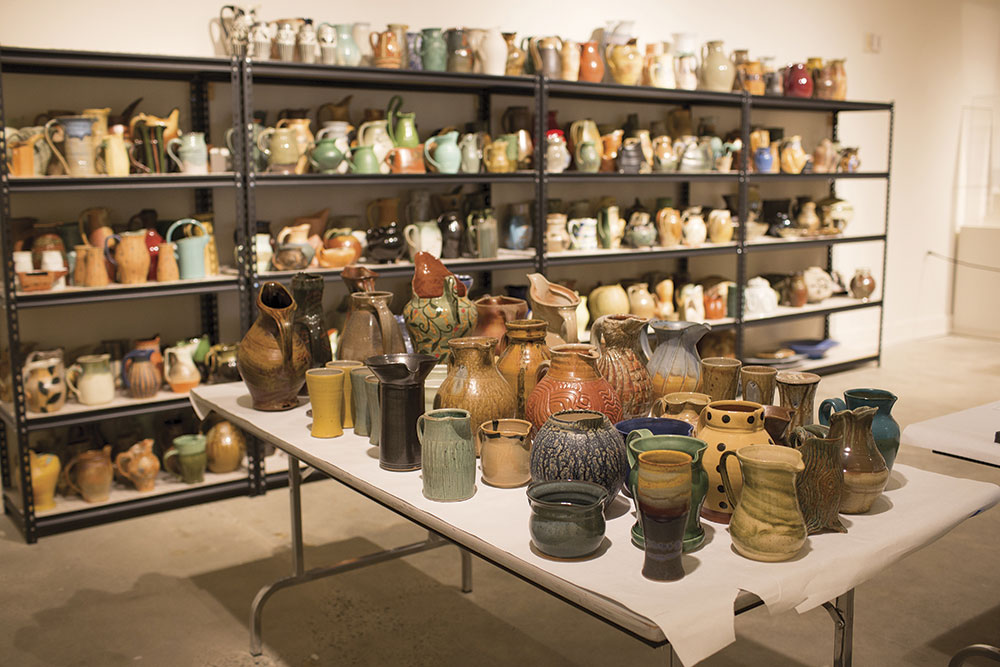
A group of women stand outside Carolyn Grosch’s workspace as she prepares a series of Josef Albers’ bright geometric abstracts to be shipped out for an exhibit at Western Carolina University. Albers was one of the leading lights of avant-garde Black Mountain College, and these works are part of the august permanent collection at Asheville Art Museum.
Grosch would usually perform this task in a back office, but as part of Vault Visible: Behind the Scenes at the Asheville Art Museum, the assistant curator works publicly, in one of the galleries.
She goes carefully through the paintings, her hands gloved, and the onlookers hail each one.
“Oh my,” says one visitor.
“Look at those colors,” adds another.
“I think people really like that experience of being up close to something,” Grosch says, “and getting the chance to engage with us and ask questions.”
It’s an unusual concept for an art museum, but not for other kinds of cultural venues. Pay the fee and you could watch as wildlife experts work behind a glass at a sea-turtle preserve, or head to the Biltmore Estate and ask the blacksmith on duty about his ancient craft.
But art-museum curators, and the jobs they do, tend to be cloaked in mystery — unless you ask for them. A lot of the artworks themselves can also be secrets, as the museum only shows about three percent of the items in its care at any time.
This exhibit upends the dynamic. In one corner is an area for restoring pieces, and another section shows how items are packaged and framed for shipping and storage.
Two large gallery spaces display replicas of the museum’s vaults. One shows four metal shelving units full of pottery, along with tables also containing potters’ works. The other gallery reveals glass pieces in cabinets.
“This is for all those people who want to go into our storage vault,” Grosch says.
There’s another reason for this exhibit, other that the chance for patrons to see the inner workings of the museum. A renovation of the space in Pack Square has begun, and curators need a complete inventory before the huge expansion takes place.
Grosch says the museum wants to make sure every piece is accounted for before items are relocated during the process
“This is an interesting experience for people, because if you think of the conventions of display … it requires a lot of space in between items,” she says. “Even in a display case, everything has its own air space. We’re used to displaying things in isolation.
“But this is a chance to really experience a collection all at once, and get a sense of the sheer quantity of objects that are in our care. If you’re a staff member, you’re used to seeing it this way. For visitors, it’s new.”
Vault Visible: Behind the Scenes at the Asheville Art Museum runs through May. The museum is open Tuesday through Saturday, 10am-5pm. See ashevilleart.org for more information.

Comments are closed.